Secrets of growing strawberries in open field
Growing strawberries in the open field is a simple process. To obtain a bountiful harvest, it is enough to choose the right planting material, prepare the soil, provide care in the form of dressings, watering and several treatments per season.
The quality and quantity of strawberries, the resistance of the bushes to the climate, exacting care - all this directly depends on the planting material, the selection of which should be approached carefully.
Features of remontant species
Many hesitate, making a choice between remontant and regular strawberries. You can plant both types, then the berries will be on the table all season. However, it should be noted that the lifespan of the remontant strawberry bush is only 1-2 years. This is due to the intensive laying of new buds and continuous fruiting. But you can adapt to this feature by applying special agricultural techniques and regularly updating the beds.
Large-fruited varieties of remontant strawberries are more capricious, constant painstaking care is required, and small-fruited varieties better tolerate heat and frost.
There are varieties that do not produce whiskers, but reproduce only by seeds. Obtaining offspring from such a bush is a very laborious process, but you can grow a whole strawberry plantation.
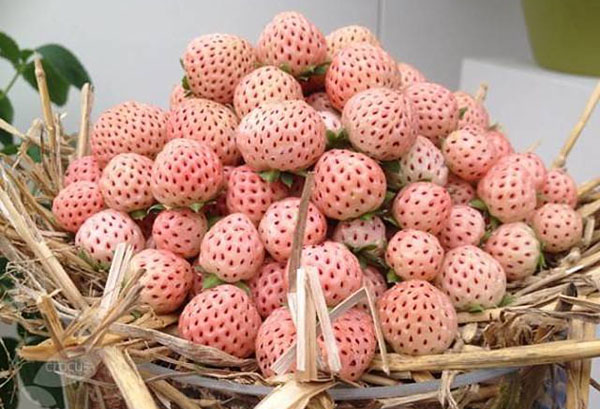
Variety selection
In order not to be disappointed in the harvest, for planting, you should choose zoned strawberry varieties, the list of which is on the Internet (State Register of Breeding Achievements). 80% of the plantation should be populated with proven species, and the rest can be planted for trial. In most regions of Russia, for example in the Urals, where the climate is rather cold and unstable, the following varieties will be appropriate:
- Zarya;
- Beauty of Zagorya;
- Festivalnaya chamomile (the Festivalnaya variety was removed from breeding due to its susceptibility to verticillosis);
- Asia;
- Brighton;
- Alba.
For planting, you can purchase several bushes of remontant varieties: Queen Elizabeth or Albion.
The above types of strawberries are also suitable for the North-West District with its frequent rains and cool summers.
Seedling selection and planting time
Nurseries are most active in selling fresh strawberry seedlings in late July and early August. This is the most suitable time for planting: the bush will have time to take root well and lay buds for the future harvest. As a rule, seedlings with a closed root system are sold in pots, it is easy to plant it, young bushes take root quickly. At the end of July, it is also recommended to update the beds of remontant strawberries.
In the fall, you can also buy seedlings, and at a much lower price, but they are usually with an open root system.
In the spring, nurseries sell what is left of last year. The choice of varieties is small, but these are already quite adult overwintered bushes. Spring is a favorable time for planting: good survival rate, the ability to build up a good green mass. The optimum temperature for the development of the seedling is 15-25 ° C.
When buying ready-made bushes of ordinary or remontant strawberries, you should pay attention to a number of signs.
- There should be no dots or spots on the leaves. This is a consequence of a fungal infection that will spread to the entire plantation. In the spring, it is better not to take such, but at the end of summer you can buy seedlings with small defects.
- In no case should you take strawberry bushes with pale leaves, as this may be a sign of late blight necrosis - an incurable infectious disease that leads to the death of plants.
- Shriveled and not fully unfolding leaves signal a strawberry mite attack.
Signs of quality strawberry planting material:
- bright green leaves;
- the thickness of the main shoot with buds (horn) is not less than 70 mm (the thicker, the better the yield);
- with an open root system, the root length should exceed 7 cm; with a normally closed root system, the ends of the roots are visible from the drainage holes or the peat pot is stitched.
It is better to buy strawberries in nurseries, but sellers who value their reputation are also found in the markets, but there is a risk of getting the wrong variety or garbage ("bakhmutka").
Advice
"Curly strawberry (strawberry)", "strawberry tree" - nothing more than a publicity stunt. There are no such varieties.
How to choose your own planting material correctly
Many people prefer not to buy strawberry seedlings, but to harvest their own or take mustaches from the neighbors from the varieties they like. The harvest will be plentiful only if you know some secrets: bushes can be both female and male. Some diligently select a mustache that is more powerful and thicker, plant them, and as a result, flowering is poor, there are few berries or no berries at all. The reason for this annoying phenomenon is a man's mustache.
Each strawberry bush, starting from the second year of development, forms the so-called "families" for men and women: inflorescences emerge first in women, whiskers in men - immediately. The latter should be carefully unscrewed from the common bush clockwise (the families can be easily separated from each other with your fingers). If you treat the entire strawberry plantation in this way in the spring, then in the third or fourth year all the beds will be covered with berries.
When a female family fades, a mustache appears on it - that's what they need to be taken for seedlings. Then a bountiful harvest will be in the second year.
Soil preparation
To plant strawberries, you need to choose a place with good long-term illumination, free air circulation, located not in a lowland or hill. Groundwater should be no closer than 0.8 m from the soil surface.
You should pay special attention to the predecessors. Planting strawberries is preferable after crops such as:
- onion garlic;
- legumes;
- greenery;
- potatoes, beets, carrots;
- marigold.
It is better not to have in the neighborhood:
- potatoes (next to strawberries grow poorly, but after them - well);
- tomatoes;
- cucumbers;
- raspberries.
Advice
It is useful to plant garlic between the strawberry bushes. It will scare off slugs and a number of soil pests.
Whatever variety is chosen for planting, but if the soil is clayey and heavy (for example, in the Urals), then strawberries will grow poorly, active fruiting is impossible, leaving is difficult. In such cases, sand, humus or pine needles should be added to the ground. Medium loam, richly filled with organic matter, is considered ideal. Clay and compost will successfully dilute the peat soil, and the high level of acidity can be extinguished with dolomite or lime one year before the laying of a strawberry plantation.
The preparation of the beds begins in the fall if it is planned to plant in the spring, but you can do this 2 weeks before planting strawberries. Works include digging, weed removal, last year's manure application.
Methods for arranging beds
Growing strawberries outdoors can be done in several main ways:
- in high beds (the method is popular in the middle lane and in the Urals).
- under the spandbond.
- in trenches (the method is widespread in the south of Russia).
- carpet (suitable for small-fruited strawberries).
In the first case, in spring or autumn, a ridge is poured about 50-60 cm high and a meter wide. Strawberry bushes are planted either in the center or along the slopes (then two rows are obtained). This technology provides good drainage, the soil warms up faster.
The second method involves covering the prepared bed with black spandbond or agril, on which a scheme for planting strawberries is marked.At the indicated points, the material is carefully cut with a cross along the lines (like an envelope), the resulting corners are folded inward. The bush hole is ready.
Advantages of planting under agromaterial:
- weed does not break through;
- the mustache does not take root, care is simplified;
- moisture is preserved, there is no need to mulch and loosen the soil;
- when planting in spring, the earth heats up faster;
- no slugs;
- berries do not get dirty when it rains.
There are also disadvantages:
- if it is a hot summer (relevant for the southern regions), then there is a high risk of strong overheating of the roots;
- not suitable for clay soils, since they must be loosened after watering so that the roots of the strawberry do not suffocate;
- in areas with high humidity in the beds under the shelter, a fungus often starts.
The trench planting scheme is used mainly in the southern regions, for which moisture retention is relevant. The method is quite simple: shallow trenches about 8 cm deep are dug on a flat field in spring, where the bushes are planted. When calculating the distance, it should be borne in mind that the diameter of the strawberry bush will increase over time, and in proportion to the boundaries of the spread of the roots. The denser the bushes are planted, the smaller the berries will be. The optimal distance between the rows is 70 * 70 cm. Using the carpet method, you can plant small-fruited strawberries according to the 50 * 50 cm scheme.
Disembarkation technique
Dig a hole under the bush so deep that all the roots can fit in it in a straightened form. The standard parameters are 20/20/20 cm. A small mound of earth is poured onto the bottom, on which the rhizome settles, and the suction roots are neatly arranged around the slopes. For powdering, a mixture is used: one bucket of earth, compost and rotted manure, 2 glasses of ash. In the case of clay soil, it is advisable to add sand or peat.
Advice
If there is no desire or opportunity to deal with natural manure, then you can buy it in dry granules. Such fertilizer is applied both in dry and diluted form with water.
When planting strawberries, it is very important to correctly position the heart of the bush above the soil level: the growth point should not be fully or half deep, but it should not be allowed to hang above the ground with protruding roots. It is necessary to fix only the root part of the horn in the soil, without burying the green one.
Gardeners, who have large powerful strawberry bushes in their beds, use their secrets when planting young animals: not one whisker at a time, but three at once, but in different holes located in a triangle at a distance of 3-5 cm.This scheme has its advantages:
- the part rejected due to illness or frost can be removed without losing the entire bush;
- the berry grows faster, the yield increases;
- if there are no peduncles, then any mustache can be replaced with a more fertile one.
When everything is planted, the strawberry beds are spilled with water and then mulched with straw, rice husks or sunflower seeds. Alkaline soils can be sprinkled with pine needles or sawdust.
Care
For newly planted strawberry bushes, the main task is to build up green mass, lay flower buds for the next year and develop the root system, therefore, it is better to remove the produced peduncles and mustaches. Such a care technology in the first year is also relevant for remontant strawberries, then next spring it will give an early and bountiful harvest.
During the summer, watering is done 2-3 times a week, during flowering for adult bushes it stops. If the summer is hot and dry, then the varieties of remontant strawberries need to be watered more often, the soil under them should always be moist. After harvesting, you should also not forget about watering, because during this period, buds are laid for next year.
Advice
Some experienced growers recommend cutting 1/3 of the leaves of the bush during the ripening of the berries. Such a measure will provide access to the sun's rays, allow the plant to direct more energy to the fruit.
Strawberries love organic fertilizers, so from the second year after planting, they must be fed in the spring and after harvest. Standard recipe: infusion of manure diluted with water in a ratio of 1:10, or bird droppings (1:15). For regular strawberries, this will be enough for the entire season. For a remontant, it may be necessary to apply fertilizers every 10-15 days until September.
The fight against pests and diseases requires special attention.
- From gray rot (when the berries are covered with white fluff), spraying with copper oxychloride will help.
- Powdery mildew (white bloom on the leaves) is afraid of a solution of colloidal sulfur or manganese.
- Brown spot (the leaves turn brown, dry and fall off) can be fought by spraying with copper oxychloride in spring or autumn.
- From the strawberry mite, which wrinkles young leaves, treatment with karbofos or the preparations "Taurus", "Caesar" will help, but only when the harvest has already been harvested.
- Spraying with a solution of laundry soap and ash is effective against aphids, but it is easier to buy ready-made non-toxic preparations, for example, "Green Soap".
If you plant several marigold bushes in the aisles of strawberries, then a number of pests can be scared away without treatment, this will facilitate the care of the plants.
Preparing for winter
In the autumn-winter period, the strawberry plantation can thin out due to freezing and soaking. A set of preparatory measures will help minimize losses:
- all mustaches, peduncles are removed (their pruning begins from the end of August), dried, as well as leaves affected by a tick or fungus;
- loosening, mulching of the soil is carried out (preferably with humus or needles);
- when a stable subzero temperature is established, the beds are covered with spruce branches or mown grass.
In snowless, cold winters, additional shelter will be needed, since at 16-18 ° C strawberries freeze out. You can throw in a 2-3 layer spandbond, fixing it around the edges with stones or hairpins. Well-wintered bushes are more resistant to diseases and give a good harvest.
When cultivating strawberries in the open field, it should be remembered that the maximum return from the bush can be obtained only in the first 3-4 years, then the berries become smaller, their number decreases, despite high-quality care. Therefore, it is periodically necessary to lay new ridges. For remontant strawberries, a composition update is required every 2 years.
For most summer residents, the scheme, as well as the planting and growing technology, is perfected quite quickly. If you correctly select strawberry varieties, correctly form and fertilize the beds, you can get a good harvest of this berry in almost any region.
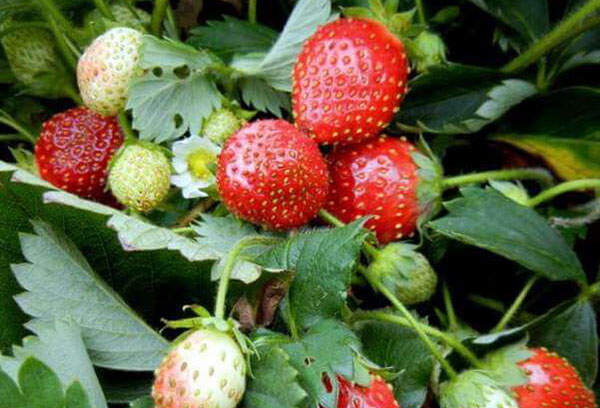
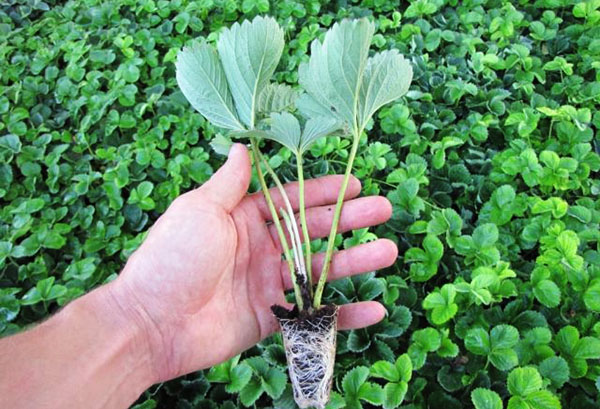
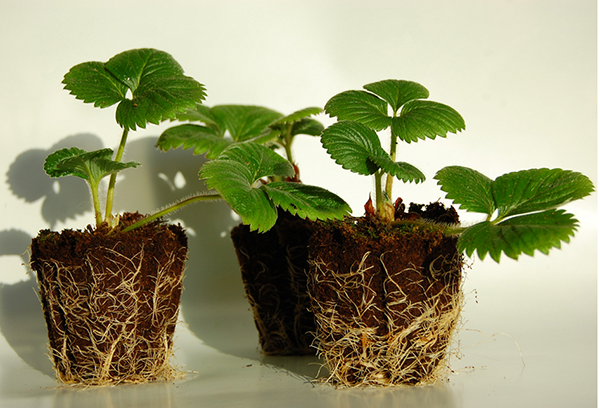
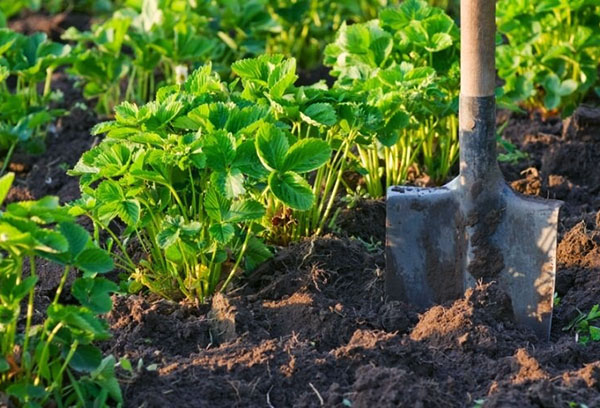
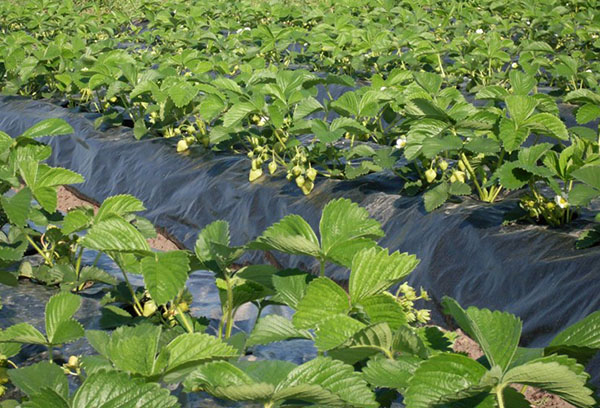
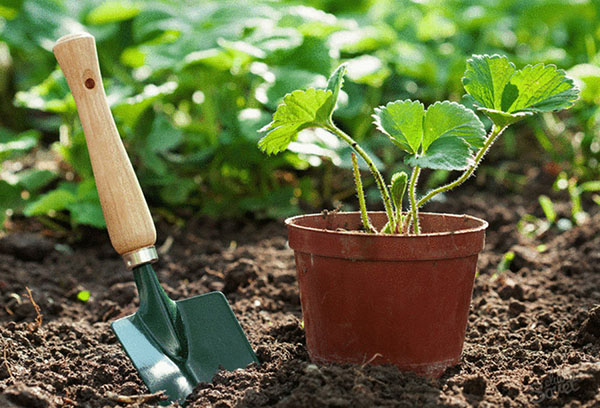
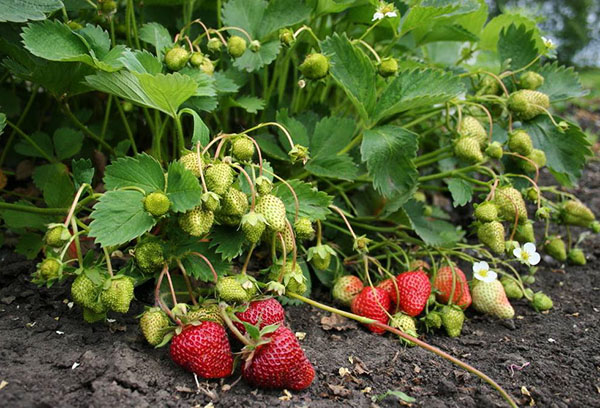
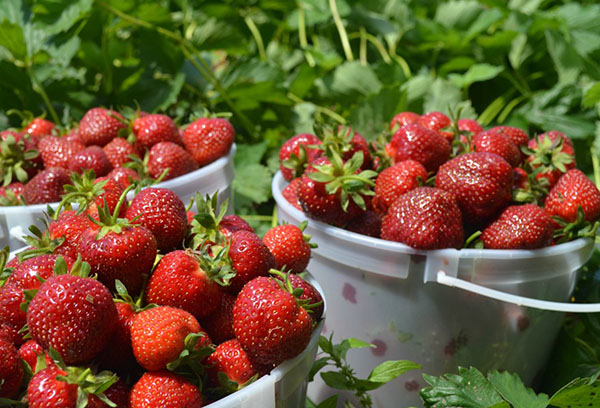
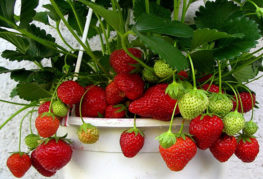
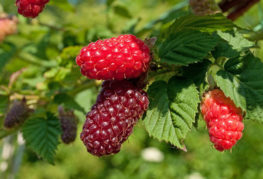
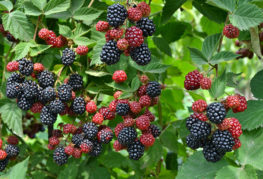
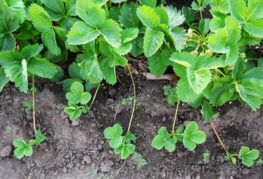
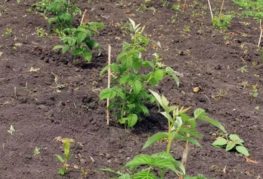
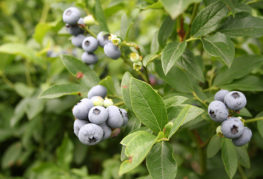
and will be published shortly.